Which Shape Has Perpendicular Sides
What Is Perpendicular?
Two distinct lines intersecting each other at ninety°, or a correct angle, are called perpendicular lines.
Example:

Here, AB is perpendicular to XY because AB and XY intersect each other at xc°.
Non-Example:
 |  |  |
| The two lines are parallel and do not intersect each other. They can never exist perpendicular to each other. | The two lines are intersecting each other at an acute angle. So, they are not perpendicular. | The lines are not intersecting each other at right angles. |
Perpendicular Symbol
Perpendicular lines are represented by the symbol '⊥'. Suppose, m and northward are two lines intersecting each other at 90°, then they are perpendicular to each other and are represented as chiliad ⊥ n. The point of intersection of perpendicular lines is called the foot of the perpendicular.
Properties of Perpendicular Lines
- These lines always intersect at right angles.
- If two lines are perpendicular to the aforementioned line, they are parallel to each other and will never intersect.

- Adjacent sides of a square and a rectangle are always perpendicular to each other.
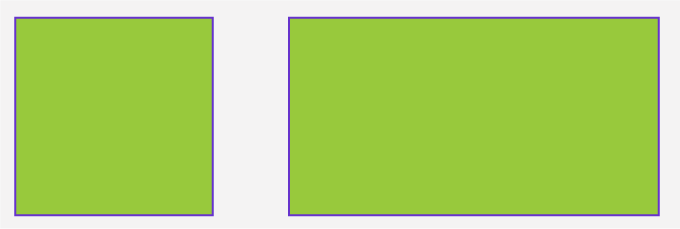
- The sides of the right-angled triangle enclosing the right bending are perpendicular to each other.
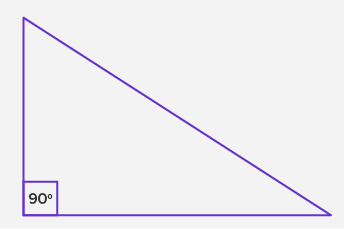
Real Life Examples
We can notice many perpendicular lines in existent life.
Some examples are the sides of a set square, the arms of a clock at certain times of the twenty-four hour period, the corners of the blackboard, a window, and the Red Cross symbol.
Difference between Perpendicular Lines and Parallel Lines
| Perpendicular Lines | Parallel Lines |
| Perpendicular lines are lines that intersect at a 90° angle. | Parallel lines are lines that are ever the same distance apart. Parallel lines never intersect. |
| The symbol used to represent a perpendicular line is "⊥". | The symbol used to represent a parallel line is "||". |
| Example: The corner of the postcard | Example: Railway tracks |
| The corner of a ruler | The edges of a ruler |
Construction of Perpendicular Lines
We can draw perpendicular lines for a given line in two ways.
- Using a protractor
- Using a compass
Drawing a perpendicular line using a protractor
Pace 1: Let thou exist the given line and A the given indicate on it.
Step ii: Place the protractor on the line thou such that its baseline coincides with m, and its eye falls on A.
Step three: Mark a point B confronting the ninety-degree marking on the protractor.
Step 4: Draw a line due north passing through A and B.
Then line g ⊥ line n at A.
Drawing a perpendicular line at a given signal on a line using a compass
Step 1: Place a compass tip on the given bespeak A. Have an appropriate radius and draw an arc on either side of the given bespeak.
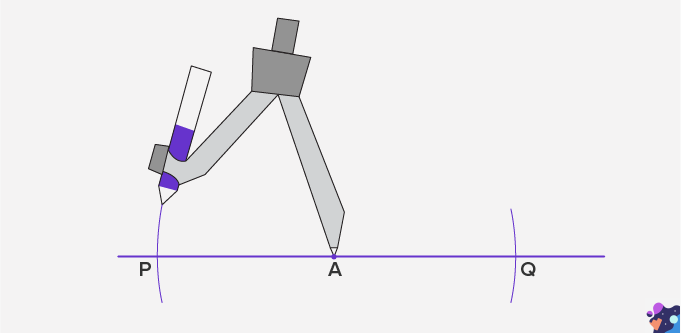
Step two: Stretch the compass wider. Identify the compass tip on the new points and make a small-scale arc above the given line. The two new arcs will intersect.
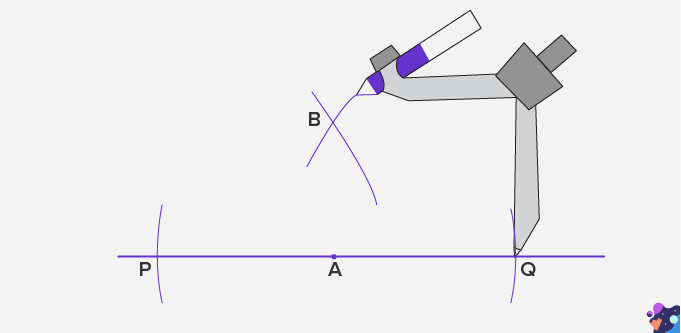
Step iii: Utilize the ruler to join the given betoken A and point B where the arcs intersect.
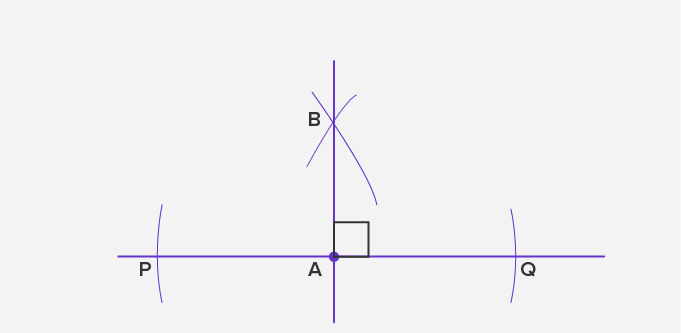
Solved Examples on Perpendicular
Instance 1: Land whether a given set of lines are perpendicular or parallel.
| (a) | (b) |
| (c) | (d) |
Solution:
- Parallel lines
- Perpendicular lines
- Perpendicular lines
- Parallel lines
Case 2: Write a relation between the line segments indicated by the arrow in each shape.
Solution:
- AB ⊥ AE
- PQ || SR
- PQ || NM
- AB ⊥ Advertising
Instance 3: The diagonals of a rhomb are perpendicular to each other. How many right angles are formed at the intersection?
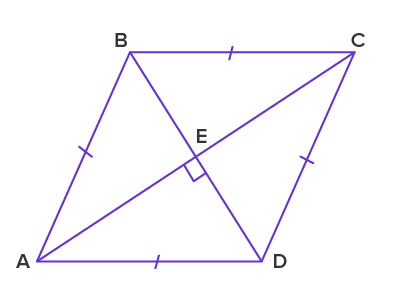
Solution:
Since the lines AC and BD intersect each other at 90 degrees, there are 4 right angles at the intersecting point.
∠AED = ∠Dec = ∠CEB = ∠BEA = 90 degrees
Example four: Name some 2-dimensional shapes that have perpendicular lines.
Solution:
Which Shape Has Perpendicular Sides,
Source: https://www.splashlearn.com/math-vocabulary/geometry/perpendicular
Posted by: eppersonhisdon.blogspot.com


0 Response to "Which Shape Has Perpendicular Sides"
Post a Comment